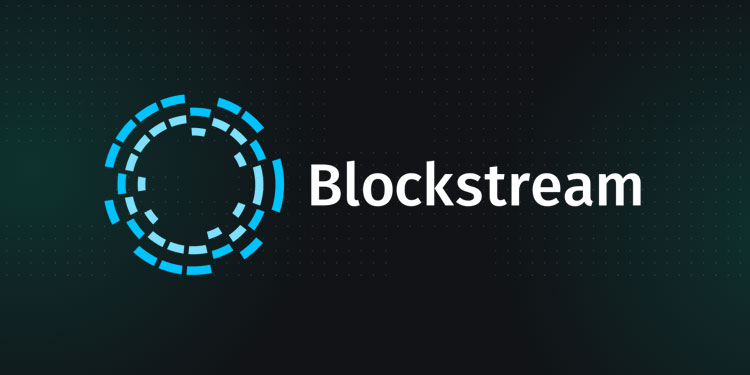
Earlier this month, Lightning Labs released the first lightning mainnet beta and the fourth version of “Ind” (Ind-0.4 beta) protocol (software infrastructure). Through a blog post, Blockstream, a leading provider of blockchain technologies, has explained a few of the capabilities of the Elements Project Lightning Charge server and the c-lightning client.
Additionally Nadav Ivgi, an independent developer has created several stunning Lightning Applications, grouped under ‘Lapps’, which supports real-world applications, while complementing the Lightning Network’s bi-directional payment channels and p2p routing.
It can be remembered that Blockstream announced Lightning Charge, a micropayment processing that makes it simple for web developers to test Blocksteam’s c-lightning implementation of the Lightning Network. Blockstream also unveiled the Blockstream Store, a Lightning-powered e-commerce site built with the WooCommerce Lightning Gateway — a general webcommerce solution for Lightning payments. This was also the first Lightning App (“LApp”) to take advantage of the power of Lightning Charge.
Blockstream has unveiled six Lightning Apps, at one per day.
FileBazaar
FileBazaar is an ecommerce tool for content creators. The FileBazaar app enables Lightning micropayments for creators who are producing content in the form of digital files like photos, videos, or documents. The creators are in total control: they list files, set prices, and identify their Lightning Charge server in a simple configuration file. The FileBazaar pay-per-view system shows samples of the creator’s file to viewers before it offers the viewer access to the rest of the file with a Lightning payment to the creator’s Lightning Charge server.
Lightning Publisher for WordPress
Lightning Publisher for WordPress is a plug-in that can turn anyone into their own publisher by allowing them to collect payments when they share their writing or other blog content on a WordPress system. After an author powers up the LApp, readers will be able to preview an article on the blog, then can choose to access the full content by making a Lightning micropayment, which will be sent to the creator’s Lightning Charge server. Like FileBazaar, Lightning Publisher for WordPress helps content creators to break away from the constraints of traditional advertising-based web revenue and instead sets them on their own paths to independently conduct business online. It also gives readers more control: they can buy just the articles they want, when they want them, by sending instant micropayments to the publishers of their choice.
Tipping on Lightning with the Nanotip LApp
Tipping has become an important way to support content creation and other services on the internet. Blockstream offers a solution for this problem with nanotip, the third in a series of new Lightning Apps (LApps) that use the power of the Lightning Charge micropayment processing system to test Blockstream’s c-lightning implementation of the Lightning Network. The nanotip LApp solves Lightning’s payment-request problem for tipping by creating a simple web server that writes Lightning payment requests on the fly. It gives each content provider their own tip-bot, but does it in a way that keeps those creators in total control, while giving them stronger privacy than a classic Bitcoin tipjar. Meanwhile, patrons of a creator or service can choose exactly who and how much they want to tip and will receive a Lightning invoice to do so with lightning speed.
Paypercall
Paypercall fulfills the long-held promise of a next-generation web of micropayments, where web developers can request payments for specific, programmatic API actions. Want to require a micropayment when a user sends an SMS? Want to offer image processing services for a microfee? Paypercall allows developers to do so, and with Lightning’s instant payments, it enables instantaneous access to an API’s functionality.
Nanopos LApp offers Point-of-Sale simplicity
Nanopos is a streamlined point-of-sale system intended for businesses with fixed-price items, such as coffee shops and falafel stands. Vendors create entries for their items in a config file, which consumers will then see listed on a simple graphical screen. The buyers choose their items and receive a QR code, which they can use to make a payment to the vendor’s Lightning Charge server. Through its ease-of-use, nanopos shows the future of the Lightning Network as a mechanism for everyday commerce.
Ifpaytt (If Pay Then That) – Lightning Micropayments to IFTTT (If This Then That)
The paypercall LApp is a perfect fit for experienced developers programming in node.js or writing a reverse proxy. However, users without programming experience may also want to access the power of dynamically programmable micropayments, and that’s where ifpaytt comes in.
Ifpaytt (If Pay Then That) is powered by Lightning Charge and paypercall. It uses the IFTTT (If This Then That) infrastructure, which allows users to create applets by combining triggers and actions. The payment of a Lightning Network invoice becomes a trigger and when it’s completed, the programmatic action occurs. A user simply has to create an IFTTT applet linking them together. (The precise instructions for doing so are available in the ifpaytt repository.) Users of the applet have the exact same experience as they would with paypercall: they access the URL to request a Lightning invoice, pay it, then make usage of the service.
Paypercall unleashed the full power of Lightning Charge, but ifpaytt makes it available to any user through the simple and elegant IFTTT methodology. Now anyone can charge a micropayment for any action on any web page.
To try these apps, a user just needs a testnet node, a Lightning Charge server, and the correspponding LApp.